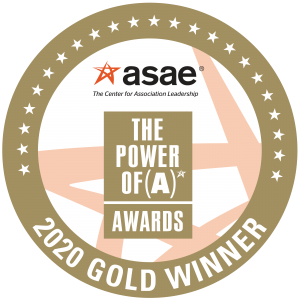Take Charge of Your Financial Wellness in Optometry School and Beyond
Majority of Optometry Students Use Financial Aid
The majority of optometry students utilize financial aid, including loans. You’ll likely be doing the same, so you’ll want to plan ahead of time how to finance your optometry education responsibly. As you probably know, the costs to complete a program in any of the health professions, which include not only tuition but also living and other expenses, have been on the rise.
“Based on information included in the Annual Student Data Report (Academic Year 2013-2014) from the Association of Schools and Colleges of Optometry (ASCO), the average indebtedness of students graduating from optometry school is $148,000,” says Tami Sato, Senior Director of Enrollment Management and Financial Aid at Marshall B. Ketchum University (MBKU). For many students, this can’t be avoided, Sato notes, so the goal is to have a strategy that will lead to successful repayment.
Understanding the Terms of a Loan
The good news is that graduate students in general have a low average student loan default rate, 6.4% according to the U.S. Department of Education, and the average default rate among optometry students is even lower. “The colleges and universities that list their optometry program’s default rate separate from their overall rate in the Department of Education’s database tend to have default rates among optometry students of 1% or less,” Sato explains. “At the Southern California College of Optometry at MBKU, we have had a zero percent default rate for 16 years. These low rates indicate that the strength of the optometric profession is strong enough to make the debt level manageable.”
A solid repayment strategy includes borrowing the least amount possible and understanding the terms of your loans. The latter can be tough because, as Sato explains, “In addition to the standard 10-year, graduated, extended and loan consolidation plans, there are seven income-driven repayment plans. It’s a puzzle for students to try to figure out the best repayment plan for their individual situation.” Fortunately, there’s lots of help available. Every optometry program provides some kind of assistance, whether it be seminars, informative publications or one-on-one counseling. “The schools and colleges of optometry are concerned about the wellness of the whole student: physical, mental, personal, academic and financial,” Sato says. “So if we can reduce the financial stress/worry for students, they can focus on what they are attending our schools and colleges for, becoming successful Doctors of Optometry.”
Optometry Scholarships
Scholarships are a great potential source of financial aid and are available through each of the schools and colleges as well as via industry and other national organizations such as the American Optometric Foundation. You can find an American Optometric Association Guide to Optometric Loans, Grants and Scholarships online. Scholarships are awarded based on a wide variety of criteria. You can contact the financial aid officer at the school(s) or college(s) of your choice for information on all types of available aid. Some students work while attending optometry school to help defray expenses. Work study programs can be a good option for landing an on-campus job that might allow some flexibility for fitting with your class schedule. Whether to work while attending optometry school is a personal choice based on how you assess your ability to juggle both your studies and a job.
Other Helpful Financial Resources, Most of Which are Free
Other excellent resources, some related to general financial wellness and many that are student-loan specific, include:
■ The exit interview, an in-person or online counseling session with your optometry school’s financial aid office before graduating, is an opportunity to review the terms and obligations of your outstanding student loans.
■ 360 Degrees of Financial Literacy is a national volunteer effort of the nation’s certified public accountants to help Americans understand their personal finances and develop money management skills.
■ The free mobile phone app mint.com (owned by Intuit) enables easy organization of your finances, including automatic categorization of your transactions, plus active, zoomable charts and graphs, bill payment reminders and ways to save money.
■ Great Lakes is a non-profit organization dedicated to helping students borrow responsibly, complete their education and find repayment solutions that work for them.
■ YouCanDealWithIt.com is a public service of the Pennsylvania Higher Education Assistance Agency that provides practical and easy-to-understand advice on how to deal with common financial situations facing today’s college students and recent graduates.
■ SALT, created by the non-profit American Student Assistance, helps students make better decisions about paying for and paying back the cost of their education.
■ Nelnet offers products and services to help students and families plan, prepare and pay for their education.
■ The U.S Department of Education has created several tools to help borrowers understand their loan obligations, such as a financial aid counseling tool and detailed explanations of flexible loan repayment plans.
■ Inceptia, a division of NSLP, provides forms, resources and calculators aimed at helping students achieve financial success.
■ The National Student Loan Data System (NSLDS) is the U.S. Department of Education’s central database for student aid. NSLDS Student Access provides a centralized, integrated view of Title IV loans and grants so that recipients of Title IV Aid can access and inquire about their loans and/or grant data.
■ Practical Money Skills for Life, a partnership between Visa and leading consumer advocates, educators and financial institutions, aids consumers and students of all ages in learning the essentials of personal finance. At the website you can find free educational resources, including personal finance articles and games.
■ Many books have been written about managing student debt. Titles include: How Smart Students Pay for School: The Best Way to Save for College, Get the Right Loans, and Repay Debt, CliffsNotes Graduation Debt: How To Manage Student Loans And Live Your Life and How to Wipe Out Your Student Loans and Be Debt Free Fast: Everything You Need to Know Explained Simply.
Successfully Financing Your Optometry Education: Your Happy and Successful Future Depends on You
If you asked MBKU’s Sato for her advice on responsibly financing your optometric education, she would tell you to establish good fiscal patterns by not borrowing more than you need to, not overusing credit cards, having an emergency fund and paying bills on time. Her top five recommendations:
1) Have a spending plan. Know where money is coming from and where it is going.
2) Know what you owe. Keep all your loan documents in one place and refer to the government’s website, NSLDS.gov for your loan history.
3) Establish or keep your good credit. Pay bills on time, don’t take out too many credit cards (that extra 10% off at department stores is not worth it) and regularly check your credit report.
4) Plan for the unexpected. Have adequate insurance, have an emergency fund or plan for car repairs, a trip home due to a family emergency, a dental problem, etc.
5) Don’t become delinquent or default on your student loans. This is pretty hard to do if you know and use the options available to you, such as forbearance (a temporary halt to repayment) or using one of the income-driven plans for loan repayment.
She also says that financing your optometric education is an opportunity to learn and practice good financial habits that will carry over to your professional — and happily successful — life as an eye doctor.





